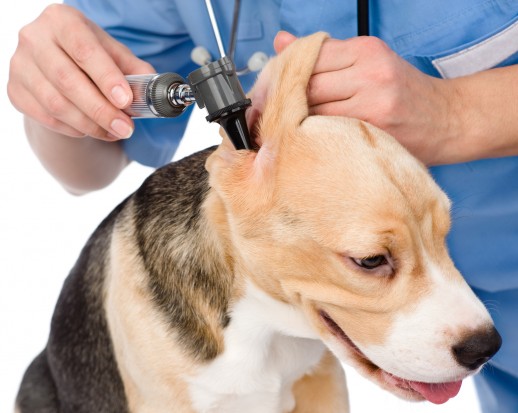

If you’re faced with a dog that is showing potential signs of threat or aggression, this can be very frightening and of course, potentially dangerous, and should be properly dealt with by either the owner or, if appropriate, the relevant authorities.
However, in order to be able to do this or summon help, first of all you will need to be able to extricate yourself from the situation safely and efficiently, and turning tail and running is at the top of the list of the worst possible ways to react in this sort of situation, even if all of your senses are screaming at you to flee!
In this sort of situation, it can be hard to remember the details of what your previous experience of dogs has taught you about the best way to defuse a problem and get away safely, but the keys to this are moving slowly and remaining calm, even if you feel like doing the exact opposite! There are a whole range of different ways in which you can defuse the threat of a potentially aggressive dog who is facing up to you or has pinned you in a corner, and in this article, we will share three of the best, most effective and safest ways to do this. Read on to learn more.
Few dogs will simply run up to someone in the street or invade their garden and deliberately begin to threaten them, but there are a whole range of seemingly innocuous, everyday situations that can lead to a face to face stand-off with a strange or even familiar dog. One of the most common of these is entering the territory of a strange dog, such as if you have inadvertently wandered onto land where a dog is roaming loose, or if you are attempting to ring the doorbell of a home with a loose dog who tends to be territorial.
Certain breeds and types of dog tend to be more territorial than others, with guarding breeds such as the German Shepherd and Japanese Akita high up on the list; however, this does not mean that such dogs are out of control or aggressive, and the fact that any given dog is growling, barking or “herding” you rather than actually attempting to attack you is a warning rather than a threat of intention to attack, and essentially, such dogs are likely to be communicating to you to go away, rather than telling you that they want to eat you!
While such issues are something that the owner of the dog must be made aware of and prevent from happening again in the future as these situations should be prevented from occurring in the first place, this is of no help to you whatsoever when you are faced with the dog and no owner is in sight!
While it is just you and the dog, keep calm and try out these three tips to defuse the situation and get yourself out of range safely. A dog that is invading your personal space and barking or growling in an unfriendly manner has one simple message for you: Back off!
The chances are that as soon as you have done this, the dog will calm down, so while you might want to talk to the dog in a calm, encouraging voice, don’t bend down or try to pet them; simply keep your body relaxed and calmly, slowly back away.
Humans consider eye contact to be polite and a sign of sincerity, and avoiding eye contact is usually regarded as at best rather strange, or at worst, a sign of dishonestly or deception. This means that many people will attempt to make sincere eye contact with a threatening dog without even thinking about it, in order to attempt to convince the dog of their good intentions, but eye contact in dog language indicates a challenge or threat, which will soon make the situation worse!
Keep the dog within your frame of vision at all times, but lower your eyes so that you are not making eye contact with the dog, and back away or await help.
Don’t turn your back on the dog and don’t make any sudden movements; bringing your hands up in a gesture of appeasement can cause a dog that is already wound up to snap at you. However, if you are carrying a bag or any other object, slowly try to bring this round in front of your body so that it is between you and the dog, then back away slowly whilst still facing the dog until you are at least twenty feet from the dog and the dog has stopped pursuing you and growling at you.
You will no doubt have a very good front-on view of the dog that is growling at you, and said dog is also likely to have their hackles raised and be facing you squarely, which are all things that make the dog look bigger and more imposing, a useful technique when trying to appear threatening!
All of your instincts will likely be telling you to stand face-on to the dog too so that you can keep them in your line vision and see what they are going to do next, but just turning slowly to the side so that you do not appear to be “squaring up” to the dog in return can go a long way towards convincing the dog that you are not a threat.
When dogs greet each other in a friendly way, you will probably have noticed that they tend to circle each other and approach each other from the side, which is canine language for a non-threatening and friendly approach. If you do the same, while again, keeping the dog in sight at all times, this can go some way towards calming the dog down.
Dogs are trained in the main part by means of verbal commands, and are generally used to the sound of human speech, as well as being able to interpret people’s moods and emotions based on their tone of voice alone. A dog that is behaving in a defensive or threatening manner will only get more het up if you start shouting, screaming or speaking in a fast, panicked tone, so talk to the dog-it doesn’t matter what you say-in a calm, warm and reassuring voice, and try out some specific words that are often used universally with dogs to mean good things, such as walkies, dinner, good dog, treat, or food.
You might even want to try whistling a tune, or softly singing a lullaby or other calm, quiet song, which may serve to either calm the dog down, or thoroughly confuse them and so, break their concentration!
While you are trying to work out your best avenue of escape, think about some of the tools that you might have available to you to help.
If you own a dog of your own, you may be able to scare up a couple of treats or a toy from somewhere in your pockets, or if not you may have a small human snack like a bag of crisps on you that might interest the dog, divert their attention from their threat display, and make them think about you more positively!
If you do need to go into your pockets or bag, keep the bag between you and the dog, make your movements really slow and gentle, and continue to speak calmly while mentioning every word that you can think of to mean food or toys!
Don’t hold your hand out to the dog or throw a treat or toy, as such movements might make the dog jump and snap at you, but try to encourage the dog to smell what you have, and drop it on the floor in front of you or gently toss it a few feet from you. If the dog shows an interest, you may be able to turn them around from threat mode to interested begging mode or playing mode, or alternatively, be able to toss the object away from you to get some space between you, and give you the chance to back away slowly or summon help.
 Rear Your Domestic Fowls in Fantastic Portable Chicken Coops
Rear Your Domestic Fowls in Fantastic Portable Chicken Coo
Rear Your Domestic Fowls in Fantastic Portable Chicken Coops
Rear Your Domestic Fowls in Fantastic Portable Chicken Coo
 Should I Buy Or Adopt A Rabbit?
Should I Buy Or A
Should I Buy Or Adopt A Rabbit?
Should I Buy Or A
 Litter Tray Etiquette For Cat Owners
Litter Tray Etiqu
Litter Tray Etiquette For Cat Owners
Litter Tray Etiqu
 Symptoms Of A Perforated Eardrum In The Dog
Symptoms Of A Per
Symptoms Of A Perforated Eardrum In The Dog
Symptoms Of A Per
 Some Common Bearded Dragon Behaviours Decoded
Some Common Beard
Some Common Bearded Dragon Behaviours Decoded
Some Common Beard
Copyright © 2005-2016 Pet Information All Rights Reserved
Contact us: www162date@outlook.com